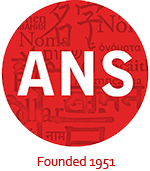
Actress Cara Delevingne speaking at Comic Con in 2015 (photo by Gage Skidmore, CC BY-SA 2.0, Wikimedia Commons)
Dr. Cleveland Evans writes about names for the Omaha World-Herald. In his March 28th column, he looks at the history of the name Kara / Cara.
Kara is super again on Tuesday.
“Supergirl,” the CW series starring Melissa Benoist as Kara Danvers, Superman’s younger cousin developing her Kryptonian superpowers, starts its sixth season March 30.
Kara is a respelling of Cara. In Latin “cara” is the feminine form of “carus,” meaning “dear, beloved.” The Latin word became a name around 1827 in Sweden, though Swedish onomastician Roland Otterbjörk notes it was also often a pet form of Karolina.
It’s hard to know when Cara’s use began in America. It’s difficult to distinguish from “Cora” in handwritten records. The first sure example, Cara Whiton-Stone (1831-1913), was a Boston socialite and published poet. Though she’s Cara or Carra in almost all available records, a 1909 U.S. Senate bill increasing her military widow’s pension calls her “Caroline Stone.”
Pittsburgh journalist Cara Reese (1856-1914), who famously covered the 1889 Johnstown Flood, was also born “Caroline.”
Many baby name books claim Cara is Italian or Irish. In Italian “cara” means “beloved.” In Irish Gaelic, “cara” means “friend.” With that meaning, Cara is fashionable in modern Ireland, peaking at 29th in 2018.
Cara has never been used as a name in Italy, though, and there’s scant evidence the Irish word became a name before the 20th century.
